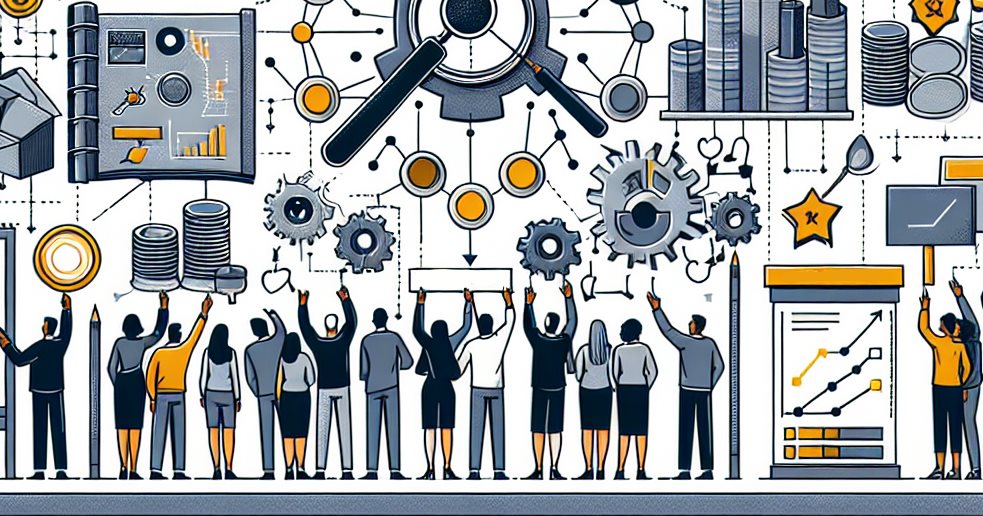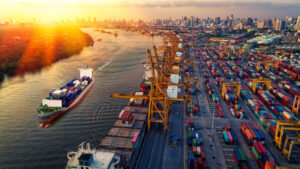What is Reverse Logistics and Why it is Important
Reverse logistics is the process of managing returned goods, which is an important part of supply chain management, mainly used for e-commerce businesses. It focuses on the management of returns, repairs, recycling, and disposal of products.
Reverse logistics potentially can be costly, but it plays a significant role in customer satisfaction and brand loyalty. For 3PL providers like Tactical Logistic Solutions, specializing in e-commerce logistics, Reverse Logistics offers both challenges and opportunities to deliver value to their clients and, ultimately, to the end consumers.
Here is a quick answer for why reverse logistics is important, especially for e-commerce businesses: Reverse logistics helps you protect your brand, helps increase customer satisfaction, reduces costs by optimizing your return process, helps with inventory management, reduces waste, and increases profitability in the long term for your e-commerce business.
Want to know more? Continue on reading…..
Table of Contents
Looking for a 3PL Company for your Amazon Product or Ecommerce Business?
Key Takeaways
- Reverse logistics plays a crucial role in customer satisfaction and operational efficiency for e-commerce businesses.
- While managing reverse logistics can be challenging, it also offers opportunities for saving money, improved customer loyalty, and environmental sustainability.
- E-commerce sellers should adopt a strategic approach to reverse logistics, using the expertise of 3PL providers like Tactical Logistic Solutions and utilizing technology to increase efficiency, save on costs, and give you a piece of mind.
Reverse Logistics for E-commerce Sellers
Reverse logistics is an important aspect for e-commerce businesses for several major reasons:
- Customer Satisfaction and Loyalty: A simple return process improves customer satisfaction, encouraging repeat business and continued loyalty to your brand. In the e-commerce world, customer retention is key to continuous revenue growth. A solid return experience can turn a potentially negative situation into a positive one, reinforcing the customer’s decision to choose your business over competitors.
- Reduces Costs: Efficient reverse logistics can significantly reduce the costs associated with returns. By optimizing the returns process, businesses can lower transportation, processing, and restocking expenses. This cost efficiency can improve profit margins and allow for more competitive pricing strategies.
- Helps With Inventory Management: Effective reverse logistics improves inventory management by quickly reintegrating returned goods into the supply chain, reducing the need for excess inventory and minimizing losses from unsellable goods. This efficiency supports a leaner, more responsive supply chain.
- Reduces Waste: Minimizing waste through recycling and repurposing returned goods contributes to a business’s sustainability efforts. In today’s market, eco-conscious practices can enhance brand reputation and appeal to a growing segment of environmentally aware consumers.
- Increased Profitability: By using reverse logistics, your business can deliver value through improved profitability, brand strength, and market competitiveness. An efficient reverse logistics process can be a significant factor in a company’s overall financial health and strategic positioning.
Challenges in Reverse Logistics
Managing reverse logistics comes with its set of challenges:
- Fraud and Abuse: Customers might return used or different items, exploiting return policies.
- Costs and Efficiency: Processing returns involves significant costs, including transportation, inspection, and restocking. Speed and efficiency are crucial to minimize these costs.
- International Returns: Handling returns from international customers can be particularly complex due to shipping costs and regulatory issues.
- Environmental Impact: Ensuring that reverse logistics processes are environmentally sustainable adds another layer of complexity.
Benefits of Effective Reverse Logistics
An effective reverse logistics strategy offers many benefits:
- Make Your Customers Happy: A simple return process encourages customer loyalty and repeat purchases.
- Reduce Your Costs: Being efficient in managing returns can greatly reduce the costs associated with restocking and disposing of your returned items.
- Eco-friendly: Focusing on repurposing and recycling, your company can minimize waste and contribute to environmental sustainability.
- Gain an Advantage Over Your Competition: Companies that excel in reverse logistics can differentiate themselves in the market, offering superior customer service.
Strategy's to Use for E-commerce Sellers
For e-commerce sellers, particularly those utilizing services like Amazon’s FBA, integrating an effective reverse logistics strategy involves several key steps:
- Partner with a Skilled 3PL Provider: A 3PL like Tactical Logistic Solutions can offer the expertise and infrastructure needed to manage complex reverse logistics operations efficiently.
- Use Technology: Utilizing advanced logistics software can help track returns, manage inventory, and analyze data to identify trends and areas for improvement.
- Focus on Clear Customer Communication: Clear and proactive communication with customers about return policies and processes can help manage expectations and reduce confusion.
- An Environmental Friendly Approach: Making eco-friendly packaging and disposal methods a priority can help increase a company’s sustainability profile and brand to environmentally conscious consumers.
Overall Better Customer Satisfaction Using Reverse Logistics
Creating a hassle-free return process is a critical factor in customer satisfaction. Today’s consumers expect easy, transparent, and convenient return policies. Please remember we are in the Twitter era where it is hard to keep the attention of customers.
By making the return process easy, companies can significantly improve the customer experience, leading to higher brand loyalty and repeat purchases. A positive return experience can also encourage customers to leave favorable reviews and recommend the business to others, further increasing its reputation and attracting new customers.
Helps You Reduce Costs on Returned Goods
Efficiently managing returns can lead to large cost reductions in several areas of your e-commerce business:
- Reduced Transportation Costs: By optimizing return logistics routes and consolidating returns can lower transportation expenses.
- Lower Processing Costs: Simplifying the inspection, sorting, and restocking of returned items can reduce labor and operational costs.
- Decreased Waste Disposal Costs: By finding ways to repurpose or recycle returned items, companies can avoid the costs associated with disposing of unsellable goods.
Are you looking to reduce costs with Freight Forwarding Services? Tactical Logistic Solutions offers Freight Forwarding Services that reduce costs for any kind of business!
Reverse logistics is a vital component of any e-commerce supply chain. By understanding its challenges and benefits, and implementing strategic solutions, companies can improve their operational efficiency, customer satisfaction, and competitive edge in your market’s niche.
Contact Us today to get started! You can reach us by Phone: (201)-809-1222
Or Email: info@tacticallogistic.com
FAQ for Reverse Logistics in 3PL
Reverse logistics encompasses all operations related to the reuse of materials and products, including the process of planning, implementing, and controlling the efficient movement of raw materials, inventory, finished goods, and relevant information from the point of the consumer back to the manufacturer. This process aims to recapture value from customer returns or properly dispose of products or materials.
The main difference between reverse logistics and traditional logistics lies in the direction and initiation of the process. Traditional logistics focuses on getting the product to the customer, involving planning and decision-making by the business. In contrast, reverse logistics is initiated in response to consumer actions, such as returns, and deals with bringing products back from the customer to the business or manufacturer.
The costs of reverse logistics vary depending on the 3PL provider and the specific needs of your business. Factors influencing cost include transportation, processing, inspection, and restocking of returned items. While costs can be significant, an effective reverse logistics strategy can ultimately save money by recapturing value from returned products and enhancing customer satisfaction.
A well-implemented reverse logistics strategy can reduce business risk by protecting data, minimizing environmental impact through sustainable practices, and enhancing customer satisfaction. Proper handling of returns and data security can prevent data breaches, while sustainable practices can avoid fines from improper disposal and improve public perception of the company.
The turnaround time for processing returns in reverse logistics depends on the needs of each client. While the typical maximum for a 3PL company might be around three days, the goal is to process orders in much less time whenever possible. Efficient processing is crucial for maintaining customer satisfaction and minimizing the impact on inventory and costs.






